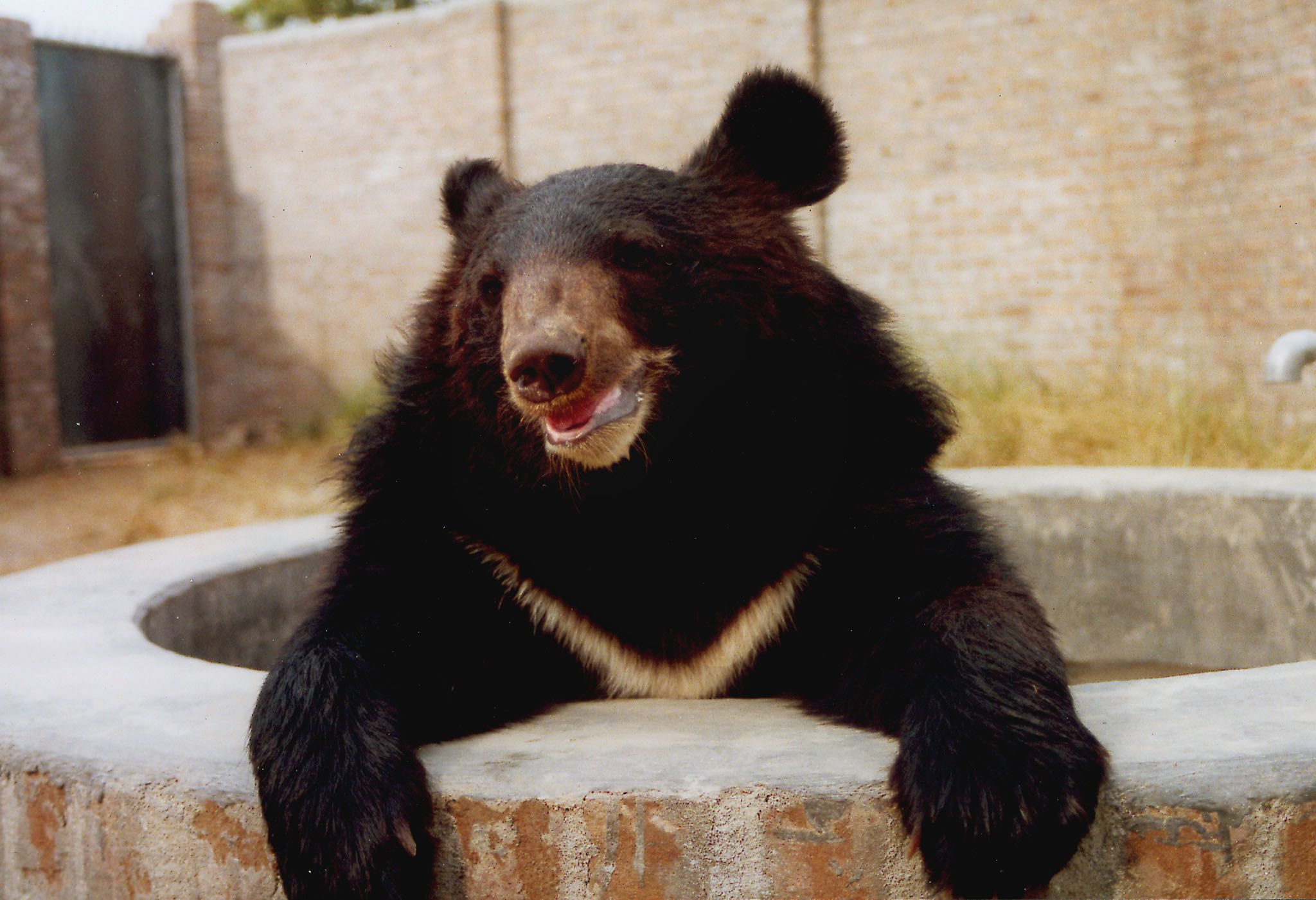
This article first appeared on the Conversation.
One of the most famous stage directions in theater is found in The Winter's Tale: "Exit, pursued by a bear."
Bears—besides Paddington and Winnie the Pooh—are extinct in Britain, but Shakespeare's audiences 400 years ago would have been entirely familiar with the animal. And thespians of old playing the Globe Theatre would have walked past the bear-baiting ring on their way in.
Bear-baiting was very popular in medieval and early modern times, attracting everyone from servants to royalty. Single or multiple dogs were set loose to bite or worry the bears. To prevent escapes (and the audiences being mauled), the bears were chained to stakes in the centre of the arena.
They were often named. George Stone, Tom Hunckes, Blind Bess were celebrity bears and one (Sackerson) is even mentioned in the Shakespeare play The Merry Wives of Windsor.
To modern perspectives, it seems barbaric to not only perpetrate such cruel acts against animals but also to celebrate them. The closest parallel may be with the Roman gladiators. Both were expensive to train and keep, both were named and celebrated by the public, and for both seeing them perform came with the frisson of their possible deaths.
For over 200 years, purpose-built bear-baiting arenas stood on the south bank of the Thames at Bankside. The association of Bankside and bears (still recognized in Southwark with the road names "Bear Garden" and "Bear Lane"), predated the better-known playhouses by at least 40 years. But when The Globe and The Rose Theatre were built alongside the bear-baiting arenas, they attracted the same audiences. In 1591 an anonymous complainant requested theater to be restricted as it was harming the bear-baiting business.
And it was a business. Phillip Henslowe and Edward Alleyn paid £450 to become the "Masters of the King's Beares, bulls and mastiff dogges" in 1604; this gave them the sole right to license bearwards (bear keepers), breed mastiffs, and generally run "the game" on behalf of the king.
While the bears were valuable and were rarely killed, the dogs were much more expendable. Records show that Alleyn was running out of dogs in 1607 and had to send people out to find more (one of the privileges of being the Master of the King's Bears was that you could buy or, if necessary, take dogs for baiting). With responsibilities to the monarch it was important that they were ready to put on a baiting wherever and whenever they were asked.
Bearwards traveled far and wide to bring this entertainment to the non-urban masses. Congleton in Derbyshire had at least 33 visits from bearwards between 1588 and 1636, while records at Dulwich College record the travels of bearwards around Kent and Gloucestershire in the early 1600s. The costs of attending the theaters and attending the baiting was the same, between one and three pence depending on where you stood.
Eyewitness accounts vary greatly. There were those who were enthralled by the spectacle, such as the Spanish ambassador, who was fêted with the baiting of a white bear (he called it "the best sport of all"), and, more rarely, those who were horrified by the cruelty shown to the animals.
Parliament suppressed the theaters in 1642, but while they tried to stop bear-baiting it continued for several years. Eventually, the High Sheriff of Surrey, Thomas Pride, took decisive action and in 1656 had the remaining bears shot. This ended bear-baiting during the Commonwealth, but with the Restoration of Charles II in 1660 a new arena was built in 1662 in Southwark and bear-baiting continued as before.
Bear-baiting was made illegal in Britain 1835, although it continued elsewhere in the world until very recently—"bear baying" (where chained bears are held "at bay" by dogs, but not supposed to be come into contact with them) was only banned in South Carolina in the U.S. in 2013.
Now the only live bears in Britain are in zoos, although they are occasionally discussed during debates about rewilding the countryside. But the British penchant for treating bears as celebrities has lasted. Images of bears are everywhere, from adverts to children's toys and stories.
We have taken an animal that was used for entertainment and turned it into an emblem of everything: from the wilderness, to comfort, to Marmalade sandwiches.
Hannah O'Regan is a lecturer in archaeology at University of Nottingham.
Uncommon Knowledge
Newsweek is committed to challenging conventional wisdom and finding connections in the search for common ground.
Newsweek is committed to challenging conventional wisdom and finding connections in the search for common ground.
About the writer
To read how Newsweek uses AI as a newsroom tool, Click here.





